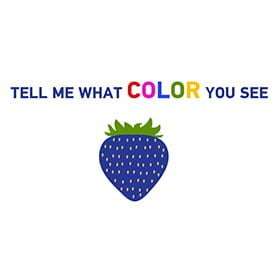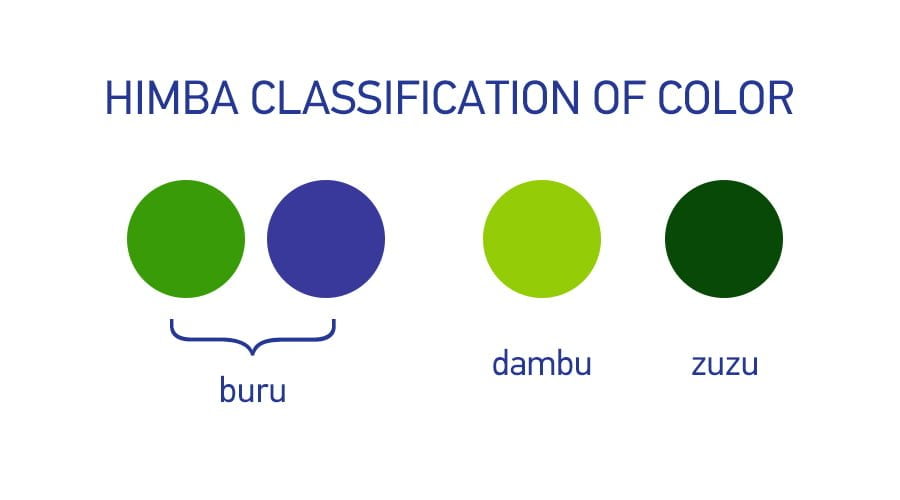According to cognitive psychologists,the answer to the second question is no. Even though we do have a different perception of colors, at the end of the day our brain is wired to make us see (see, but not perceive) the same casts as anybody else.
The first part of the question is more tricky: the language we use influences the way we perceive the world, indeed,but to what extent? Let’s go back to the Himba’s example…while the English language has 11 separate color categories, the Himba has only five. Whenever asked to identify the difference between blue and green, Himbas showed confusion: from their perspective those colors were extremely similar. When presented with shades of green, people from the West would see as only one color, Himbas would name three or four!
Some scholars believe that the difference in color perception in the case of the Himbas is determined by a lack of artificial stimuli that produces several gradations in Western societies, but not in theirs. Not being exposed to as many shades of colors,Himbas did not have the need of enriching their vocabulary to tell them apart.Thus, as a consequence, those colors just didn’t exist to them. It’s not a matter of different initial stimulus in itself, but a difference in the structural connectivity of synapses that permit hierarchical methods of categorization of those stimuli, and allow us to define and identify those colors. Pretty cool no?
Culture
Last but not the least, different casts have different meanings depending on the culture that is displaying them. A few examples:
Red, which in South Africa and in European countries is associated with violence, danger and sacrifices, in Oriental cultures is generally associated with good luck. Chinese people wear red clothes during the Chinese Spring Festival and for weddings. The Chinese stock market could be difficult to understand to the Western world, as whenever a stock’s share price has gone up, it is highlighted in red, not green.














